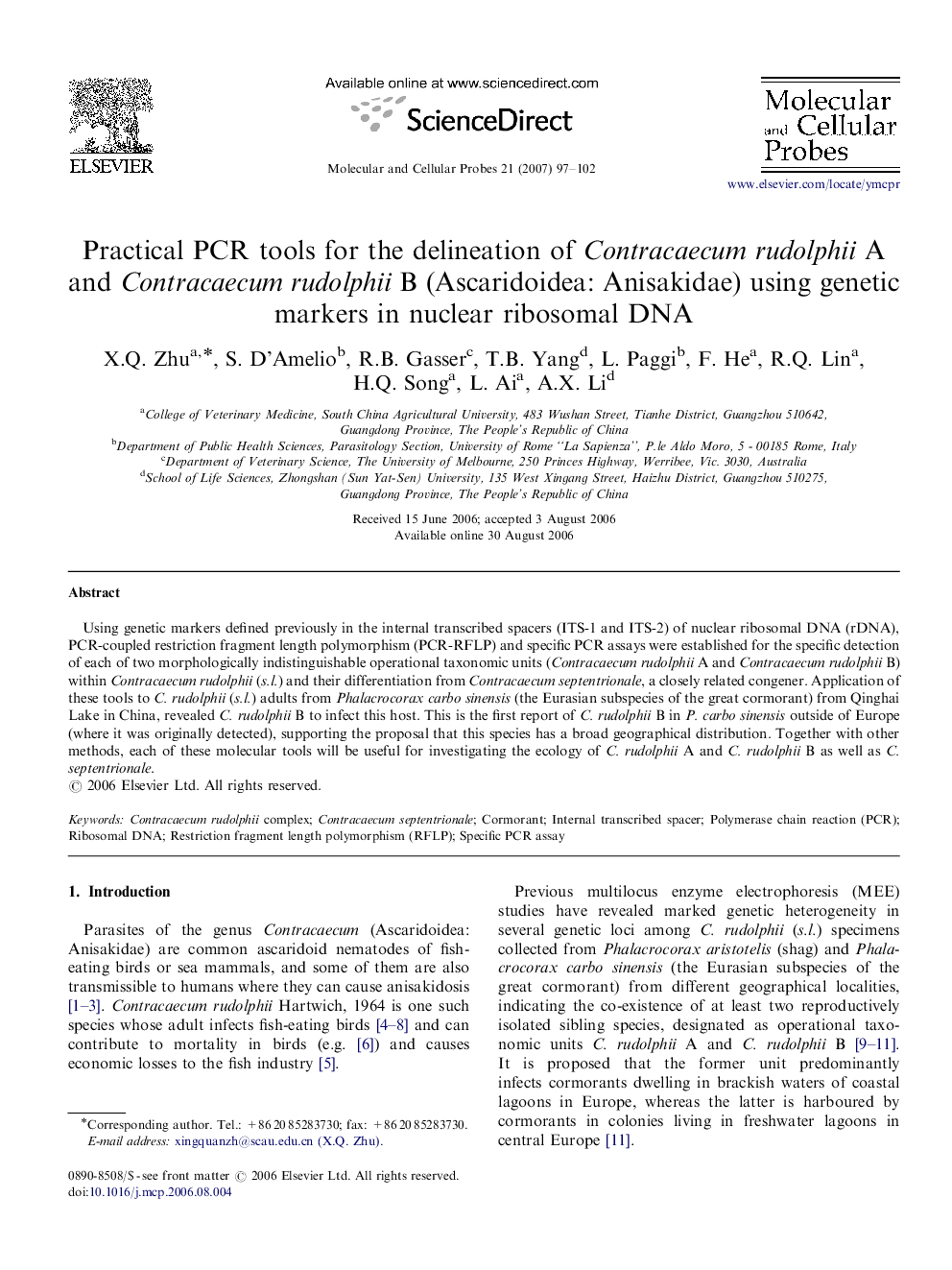| Article ID | Journal | Published Year | Pages | File Type |
|---|---|---|---|---|
| 2200091 | Molecular and Cellular Probes | 2007 | 6 Pages |
Using genetic markers defined previously in the internal transcribed spacers (ITS-1 and ITS-2) of nuclear ribosomal DNA (rDNA), PCR-coupled restriction fragment length polymorphism (PCR-RFLP) and specific PCR assays were established for the specific detection of each of two morphologically indistinguishable operational taxonomic units (Contracaecum rudolphii A and Contracaecum rudolphii B) within Contracaecum rudolphii (s.l.) and their differentiation from Contracaecum septentrionale, a closely related congener. Application of these tools to C. rudolphii (s.l.) adults from Phalacrocorax carbo sinensis (the Eurasian subspecies of the great cormorant) from Qinghai Lake in China, revealed C. rudolphii B to infect this host. This is the first report of C. rudolphii B in P. carbo sinensis outside of Europe (where it was originally detected), supporting the proposal that this species has a broad geographical distribution. Together with other methods, each of these molecular tools will be useful for investigating the ecology of C. rudolphii A and C. rudolphii B as well as C. septentrionale.
